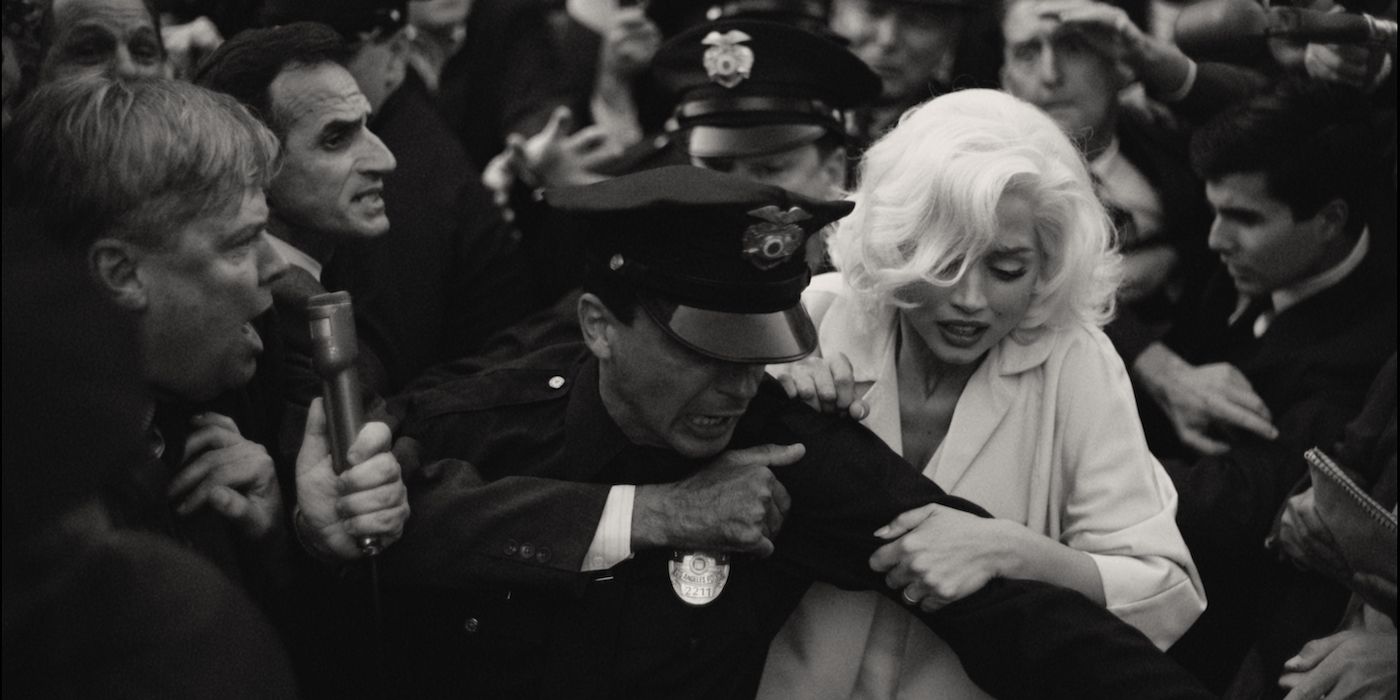Marilyn Monroe is a household name and her image often brings to mind a confident sex symbol whose life story has been the subject of many a biopic and books. Much has also been made of writer-director Andrew Dominik’s Blonde, the NC-17 Netflix drama that pulls its own Marily Monroe story from the pages of Joyce Carol Oates’ novel, which reimagines certain aspects of the actress’ life. It’s a fiction with a few notable parts that recall the truth of Monroe’s traumatic history of abuse by men. And while Blonde is uplifted by a passionate performance by Ana de Armas, it isn’t interested in the life of Norma Jeane Mortensen so much as it is in the pain and suffering she faced. If anything, Blonde is a tedious, hollow, one-note take on a woman who was so much more than her trauma.
The film follows Norma Jeane — better known to the world as Marilyn Monroe (Ana de Armas) — throughout various time periods in her life. Blonde begins with Norma Jeane's childhood in 1930s Los Angeles. Before becoming a pin-up model and actress, Norma Jeane lived with her mother, Gladys (Julianne Nicholson), whose eventual diagnosis of paranoid schizophrenia led to Norma Jeane's time in an orphanage. Dominik skips ahead in time, ignoring Norma Jeane's first marriage to focus on her time as an actress, where she is shown being raped by a studio executive during an audition. The film includes her second and third marriages to Joe DiMaggio (Bobby Cannavale, as the Ex-Athlete) and playwright Arthur Miller (Adrien Brody), respectively. By adulthood, Norma Jeane has crafted an image for herself as Marilyn Monroe, often shown calling upon this Hollywood persona. Time away from the spotlight, meanwhile, showcases Norma Jeane at her most vulnerable emotionally, as audiences witness the numerous traumas she experienced.
Blonde has its moments of aesthetic beauty, as the cinematography seamlessly shifts between color and black-and-white, and Ana de Armas holds the audience’s attention with her wide-eyed glances and sincerely sweet demeanor. There are moments when Marilyn Monroe's intelligence shines through, and the film is good at showcasing just how little people thought of it and her. De Armas plays these scenes exceptionally well, but the film is too preoccupied with the endless mental and physical torture to delve further. Blonde distinguishes Marilyn Monroe and Norma Jeane, treating the former as a disparate entity the latter uses as a cover. It’s intriguing and compelling, to be sure, and it’s a shame the film is never willing to go beyond the surface. The film is a dreary and painful watch, gleefully putting Norma Jeane in situations where she is always the victim, a role Blonde is keen to keep her in, as though that is all there is to her when there are other dimensions and personality traits to explore.
Dominik’s film insists that Norma Jeane’s bad experiences with men is linked to having grown up with an absent father. To that end, Blonde spends an inordinate amount of time focused on Norma Jeane’s attachment to the idea of her father swooping in to come save her or see her. This hyper focus on her father, someone her mother insists was an actor whose name she couldn’t bring up, leads to scenes of Norma Jeane calling Joe DiMaggio and Arthur Miller “Daddy,” as an innocent child who wants parental approval would — and it's often to the point of discomfort. The handling of Marilyn Monroe’s (nonexistent) relationship with her father is devoid of nuance and dimension, much like the rest of the film, which refuses to see and treat its central figure like a full-fledged person.
Blonde is also wildly anti-feminist, especially in its depiction of abortion. It weaponizes Monroe’s guilt and sadness and includes scenes where a fetus in the womb is talking to her, and it’s absurd, unnecessary, and frustrating all at once. Every scene is designed to make Norma Jeane look and act small, whittling her down to the point where she is solely defined by the abuses she suffered at the hands of men. It’s an empty portrayal that seems geared to exploit rather than explore. The consistent trauma — because there isn’t much else going on in the story — is unnecessarily drawn out, quickly becoming tiresome in a film that is more disconcerting than it is thoughtful in its portrayal of Marilyn Monroe. At nearly three hours long, Blonde is a dehumanizing, superficial reading of the actress at its center. It’s a film that takes pleasure in Monroe’s pain, indulging in it for too-long periods of time, uninterested in actually pulling back the curtain to study anything more about her.
Blonde is available to stream on Netflix Wednesday, September 28. The film is 166 minutes long and is rated NC-17 for some sexual content.



